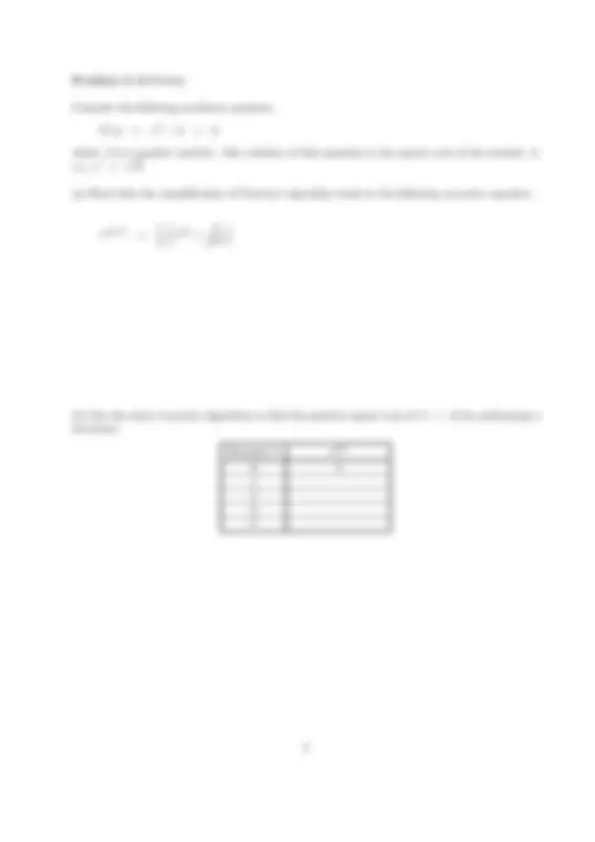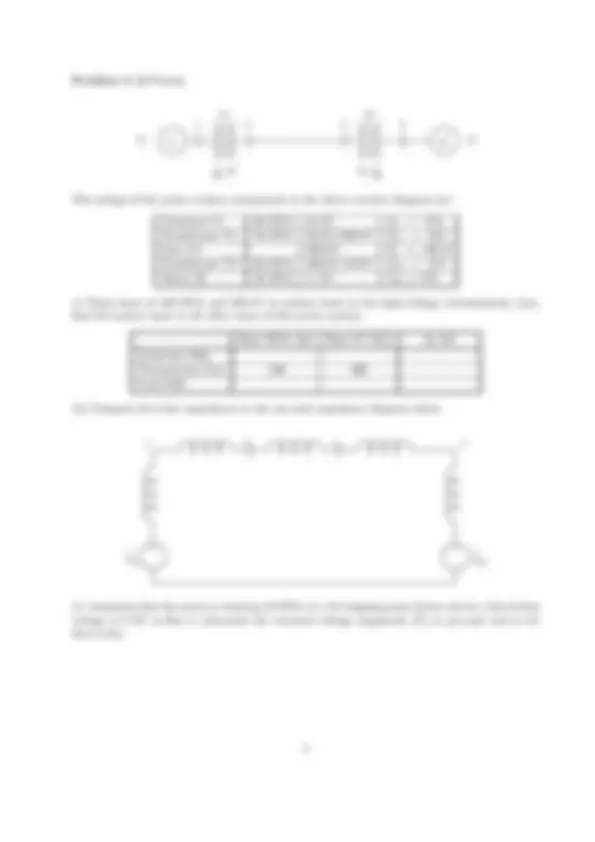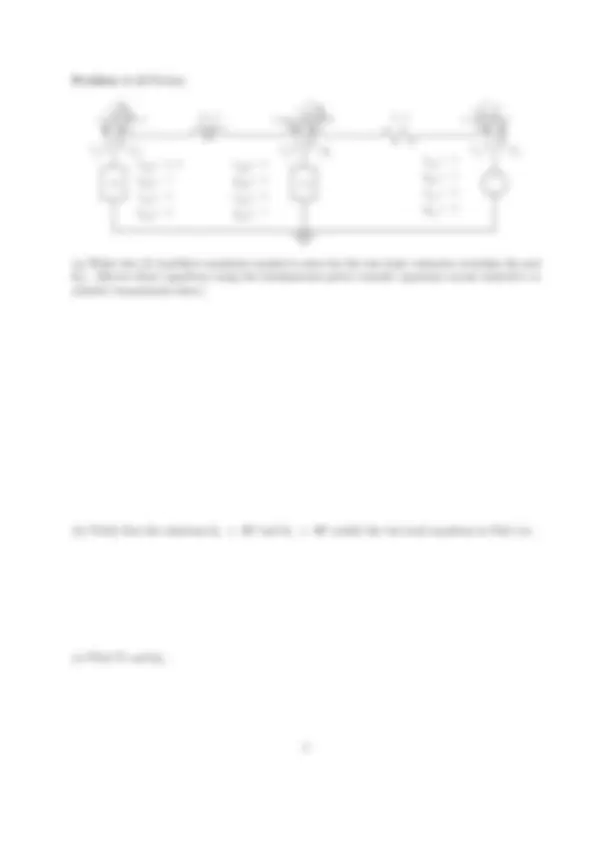





Study with the several resources on Docsity

Earn points by helping other students or get them with a premium plan


Prepare for your exams
Study with the several resources on Docsity

Earn points to download
Earn points by helping other students or get them with a premium plan
Community
Ask the community for help and clear up your study doubts
Discover the best universities in your country according to Docsity users
Free resources
Download our free guides on studying techniques, anxiety management strategies, and thesis advice from Docsity tutors
The instructions and problems for exam 3 of the ece473 course in electrical engineering, held in spring 2008. The exam covers topics such as nonlinear equations, gauss algorithm, power system components, and load flow equations. Students are required to perform calculations and find solutions using the provided information.
Typology: Exams
1 / 5

This page cannot be seen from the preview
Don't miss anything!




Instructions:
Name:
Problem 1: /
Problem 2: /
Problem 3: /
Problem 4: /
Total: /
−
jX
P 1 Q 1
V 1 θ 1
−
V 2 θ 2
−
P 1 Q 1
V 1 θ 1
R
−
V 2 θ 2
sin(θ 1 − θ 2 ) P 1 =
cos(θ 1 − θ 2 )
Q 1 =
cos(θ 1 − θ 2 ) Q 1 = −
sin(θ 1 − θ 2 )
Per-Unit System:
Zb = Vb Ib
V (^) b^2 Sb
S 1 φ
S 3 φ
Zu =
Zb
Sb V (^) b^2
Znewu = Zuold ×
( V (^) bold V (^) bnew
) 2 × Sbnew Soldb
The following nonlinear equation,
F (x) = sin
( 5 π 4
− x
)
e−x √ 2
can be recast under the following Gauss formulation:
x =
5 π 4
( e−x √ 2
)
Perform five iterations using the Gauss algorithm.
Iteration k x(k) 0 π 1 2 3 4 5
The ratings of the power system components in the above one-line diagram are:
Generator G: 60 MVA 22 kV XG = 15% Transformer T1: 50 MVA 20-kV/200-kV XT 1 = 10% Line 2-3 200-kV XL = 100 Ω Transformer T2: 60 MVA 200-kV/10-kV XT 2 = 12% Motor M: 50 MVA 11 kV XM = 15%.
a) Using bases of 100 MVA and 200 kV as system bases in the high-voltage (transmission) zone, find the system bases in all other zones of this power system.
Base MVA (3φ) Base kV (LL) Zb (Ω) Generator Side Transmission Line 100 200 Load Side
(b) Compute all of the impedances in the per-unit impedance diagram below.
(c) Assuming that the motor is drawing 45 MVA at a 0.8 lagging power factor and at a line-to-line voltage of 9 kV at Bus 4, determine the terminal voltage magnitude | V˜ 1 | in per-unit and in kV line-to-line.
G
G
Q = 0
P = 0
L
L
G
G
L
L
G
G
Q = 0
P = 2. Q =? P = 0
0 o θ 2
L
P 3 Q 3 P 2 Q 2 P 1 Q 1
θ 3
P =? Q =?
Q =?
P = 0
Q = 0
P = 0
L
1 1 1 j0.2 0.
−
PV PV
(a) Write two (2) load-flow equations needed to solve for the two basic unknown variables (θ 2 and θ 3 ). (Derive these equations using the fundamental power transfer equations across inductive or resistive transmission lines.)
(b) Verify that the solutions θ 2 = 60 o^ and θ 3 = 90 o^ satisfy the two load equations in Part (a).
(c) Find P 1 and Q 1.